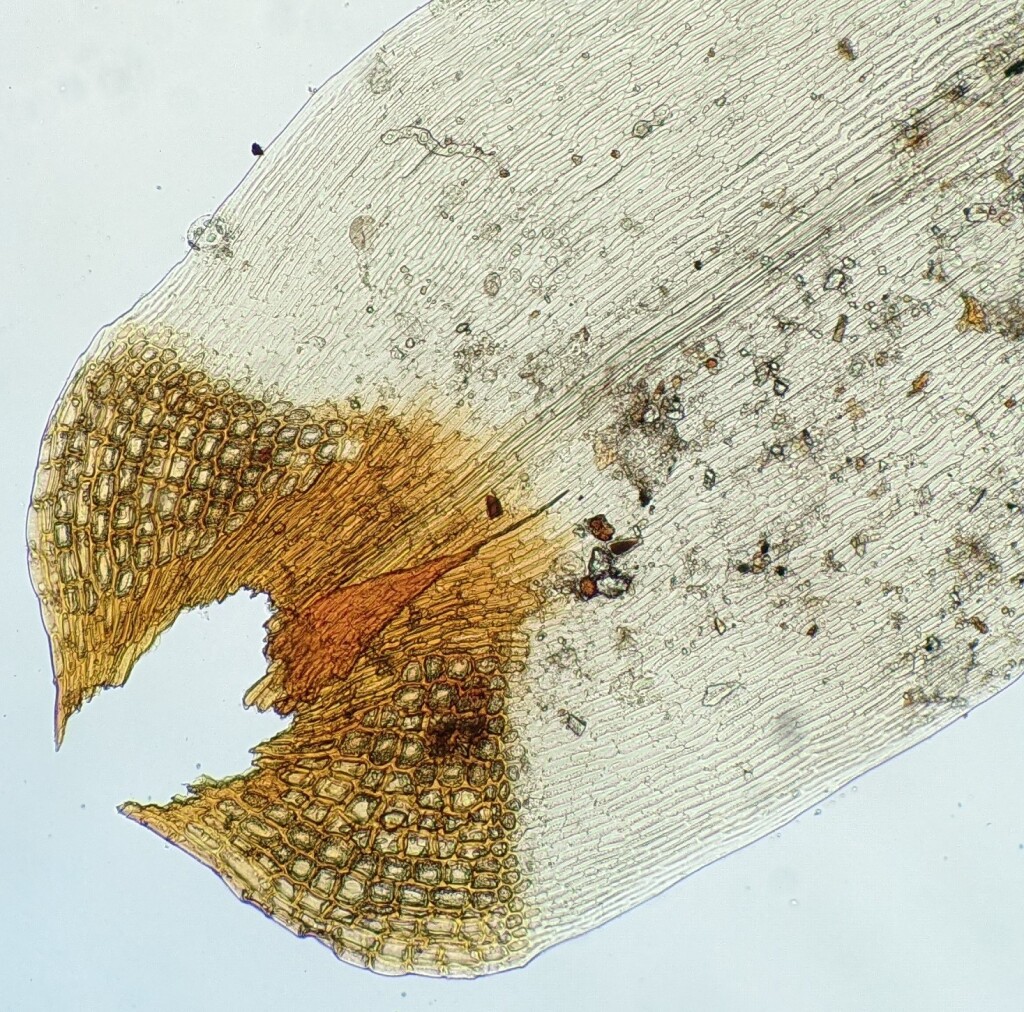Dicranaceae
Dioicous or pseudoautoicous, with male plants dwarfed or males and females of similar size. Asexual propagules occasionally present as rhizoidal gemmae or caducous leaf tips or flagelliform branches. Turves or cushions, rarely rough mats or pendents on soil, rocks, tree trunks, tree ferns or logs, rarely aquatic (not in Victoria). Stems erect to ascending or with a creeping lower part, simple or highly branched, tomentose to glabrous; central strand present or absent. Leaves spreading or facing in all directions around the stem or often falcate-secund, monomorphic, erect to wide-spreading when moist, hardly altered, crispate or spirally contorted when dry; apices acuminate, acute, mucronate or obtuse, sometimes with a hairpoint; costa absent or extending to the apical half below the apex to excurrent; margins entire to serrate, plane or inflexed, with or without a border; laminal cells oblate, quadrate, elongate-rhomboid, rectangular or linear, smooth, porose, unipapillose or pluripapillose (not in Victoria); alar cells usually clearly differentiated, enlarged or not, quadrate, polygonal or short-rectangular, single or multi-layered (not in Victoria). Acrocarpous, rarely pleurocarpous (not in Victoria). Seta solitary or more than one per perichaetium. Calyptra cucullate or mitrate (not in Victoria), smooth or scabrous (not in Victoria), glabrous. Capsules exserted, emergent or immersed (not in Victoria), erect to horizontal, straight or curved, operculate. Operculum rostrate. Peristome a single series of 16 teeth, divided into 2 or rarely 3 filaments (not in Victoria), occasionally entire, or rarely rudimentary (not in Victoria) or absent (not in Victoria).
Cosmopolitan and comprising around 21 genera and 330 species; Four genera and 11 species in Victoria.
The circumscription of the Dicranaceae has been radically altered to better represent relationships inferred through phylogenetic analyses of chloroplast DNA sequences (Stech 1999; La Farge et al. 2000, 2002). In its traditional circumscription most members had a ‘Dicranaceous peristome’ that consists of a single row of 16 teeth usually divided into two filaments with vertical striae on their outer surface and leaves that are usually narrowly lanceolate with a strong single costa (Stech 1999). However, this traditional circumscription encompassed several genera (e.g. Campylopus, Dicranoweisia, Kiaeria) that were shown to be closer related to other families than to the Dicranaceae in chloroplast DNA phylogenies and following La Farge et al. (2000, 2002) are here recognised in separate families (see families Leucobryaceae and Rhabdoweisiaceae). La Farge et al. (2002) also demonstrated that Dicnemonaceae, previously distinguished from Dicranaceae by large spores with protonemata developed within (Allen 1987), evolved from a lineage within the Dicranceae and so are better included within the Dicranaceae. In its narrower circumscription followed here, Dicranaceae differs from its more broadly circumscribed traditional circumscription by only containing primarily dioicous or pseudautoicous species (La Farge et al. 2002).
 Spinning
SpinningAllen, B.H. (1987). A revision of the Dicnemonaceae. Journal of the Hattori Botanical Laboratory 62: 1–100.
La Farge, C.; Mishler, B.D.; Wheeler, J.A.; Wall, D.P.; Johannes, K. (2000). Phylogenetic relationships within the haplolepidous mosses. The Bryologist 103(2): 257–276.
La Farge, C.; Shaw, A.J.; Vitt, D.H. (2002). The circumscription of the Dicranaceae (Bryopsida) based on the chloroplast regions trnL-trnF and rps4. Systematic Botany 27: 435–452.
Stech, M. (1999). A reclassification of Dicranaceae (Bryopsida) based on non-coding cpDNA sequence data. Journal of the Hattori Botanical Laboratory 86: 137–159.



